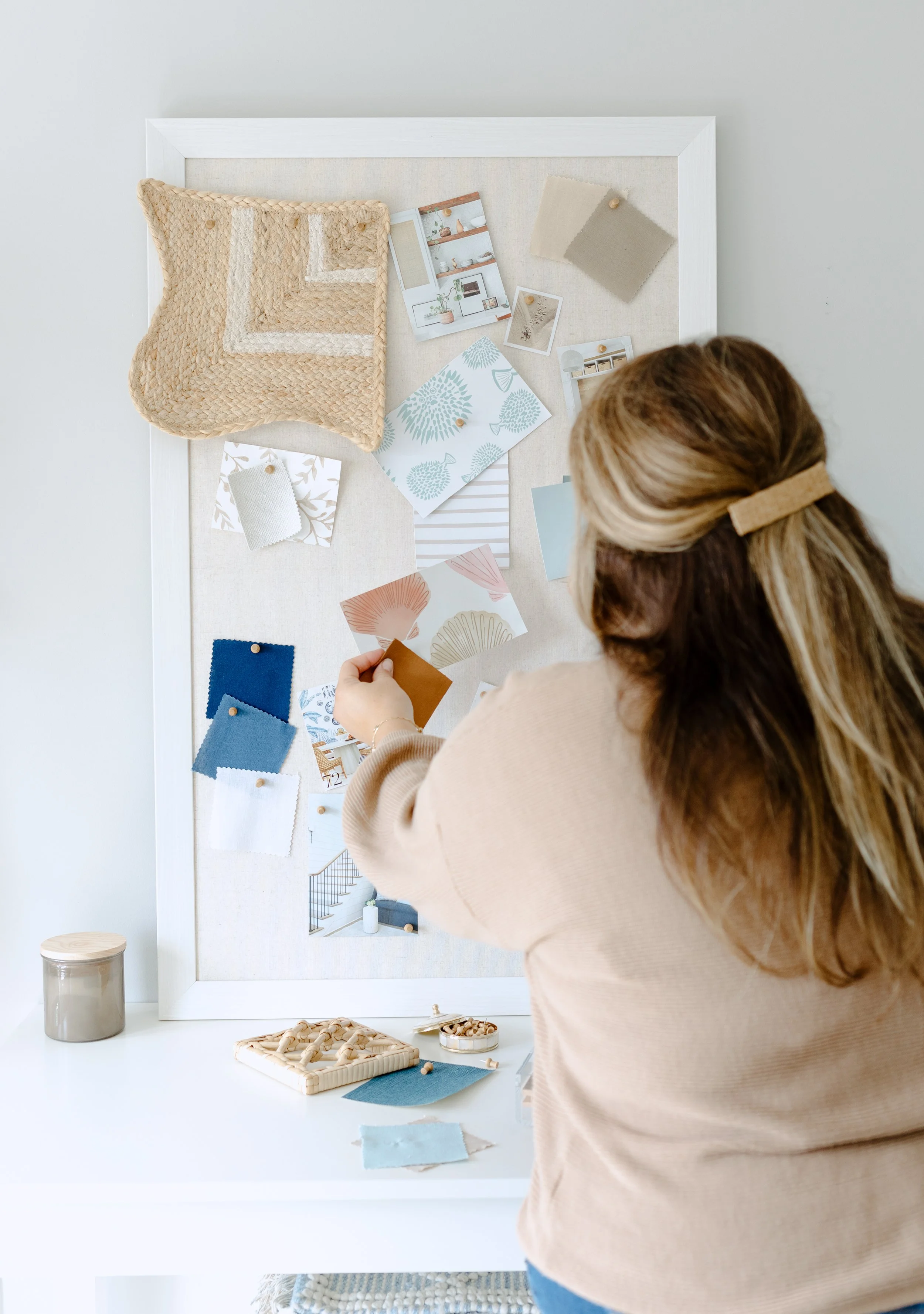Why moodboards are essential to nailing your style before demo
Starting a renovation or new build can be super exciting, but it can also feel a little overwhelming. There are so many decisions to make, and it’s easy to get lost in all the details. One thing that always helps me and my clients is using a moodboard. It’s a simple tool, but it can make a huge difference and really set the tone for the whole project.
A moodboard isn’t just a bunch of pretty pictures. It’s a visual snapshot of your style and vision for the space, a way to see everything come together before you even start tearing down walls. By pulling together inspiration, textures, colors, and design elements, you can really pinpoint what speaks to you. It helps you focus and make confident choices right from the start.
I always use moodboards as a first step in my design process. They help me get a clear sense of my clients’ tastes and give them confidence in the choices they’re making. Whether we’re doing a full remodel or just updating a few rooms, a moodboard helps pull everything together and serves as a handy reference throughout the whole process.
For me, creating a moodboard isn’t just about following trends. It’s about capturing the essence of a space that’s going to feel timeless and true to the homeowner. It’s a way to define the vibe of a home by bringing together colors, textures, and materials in a way that just works. It’s about setting the tone and creating a lifestyle that will flow through every detail of the design.
What I love about moodboards is that they help clients visualize how their style will come to life. It’s like getting a preview of your future home before the hammers even start. Once you can see how everything (colors, materials, and textures) fits together, it makes the whole process a lot less overwhelming. And when demo day finally comes, you can dive in knowing exactly where you’re headed.
Moodboards also give me room to play around with ideas and mix things up. Sometimes, I start with just a few core images and let the board evolve as the project moves forward. If something new sparks inspiration or if I see how the space feels in person, I can tweak things and still stay true to the original vision.
At the end of the day, a moodboard isn’t just about picking out colors or furniture. It’s about creating a visual guide that keeps everything aligned and focused. It helps tell the story of the home you’re designing, one that’s as much about style and function as it is about what truly makes it yours. And when it’s time for construction to start, that vision is already in place.

